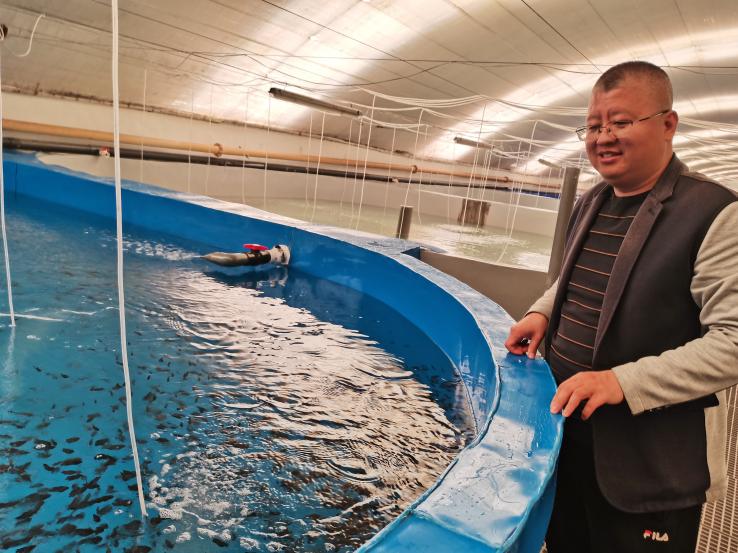(Text by XIAO Yongshuang, yongshuangxiao@qdio.ac.cn)

Yongshuang is conducting seedling research and sample collection at Laizhou Mingbo Aquatic Co. Credit: Institute of Oceanology, Chinese Academy of Science
Analysing pattern trait mechanisms in new model fish species is key to understanding their biological functions and adaptations. The pattern of formation and development of these specific traits can be revealed by studying the genetic basis, developmental process and physiological mechanism of the pattern traits. For example, by comparing the gene expression profiles of fish species with specific pattern traits with those of common fish species, the genes and pathways associated with the specific trait can be identified. Studying the developmental process of the trait can reveal the time window for its formation and the regulatory mechanism. Through physiological experiments and analyses, the effects of these specific traits on the adaptability and survivability of the fish can be further understood.
I grew up by the sea, passionate about the ocean, and full of respect and curiosity towards marine life. I graduated from the Ocean University of China and worked at the Institute of Oceanology, Chinese Academy of Sciences (IOCAS). So far, I have conducted research on the genetic evolution and utilization of fish germplasm for 18 years, and completed the study on the evaluation of germplasm resources of 10 marine fish species, clarifying the interactions between the pattern of germplasm genetic variation and climatic and geological changes.
Our current study is on Oplegnathidae fishes, which are known as dream fishes and are valuable economic fish species characterized by heteromorphic chromosomes, male-female growth dimorphism and sustained turnover of healing teeth.
I led the construction of Oplegnathidae as a new model fish species and the mechanistic analysis of model traits, we have clarified the Y-origin fusion pattern of heteromorphic chromosomes in Oplegnathus fasciatus for the first time, and the research results have been published in the international comprehensive Top Journal GigaScience and Cell Press iScience. We also revealed for the first time in the international arena that the rostral healing teeth of Oplegnathus punctatus are arranged in a "nested" pattern, and identifying the developmental sequence of the rostral teeth and key times for mineralising the maxillary teeth. This study further elucidates the regulatory mechanism of rostral tooth nesting. This study enriches the theory of fish dentition development, provides a new model for a deeper understanding of fish dentition development and adaptive evolution, and provides new insights for a better understanding of biological dentition turnover and regeneration. The research was published in the top academic journal, International Journal of Biological Macromolecules, and I was also awarded the "Best Researcher Award" in 2023 by the international academic organization ScienceFather.

(Editor: ZHANG Yiyi)

